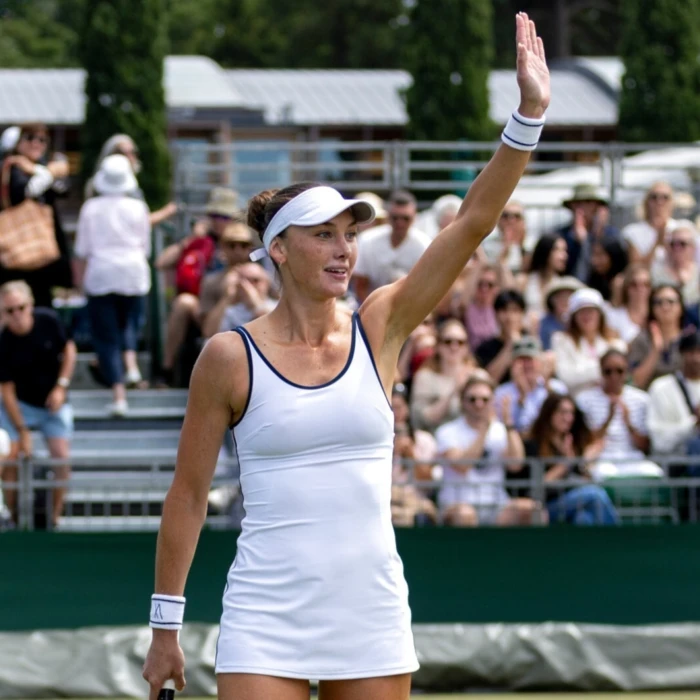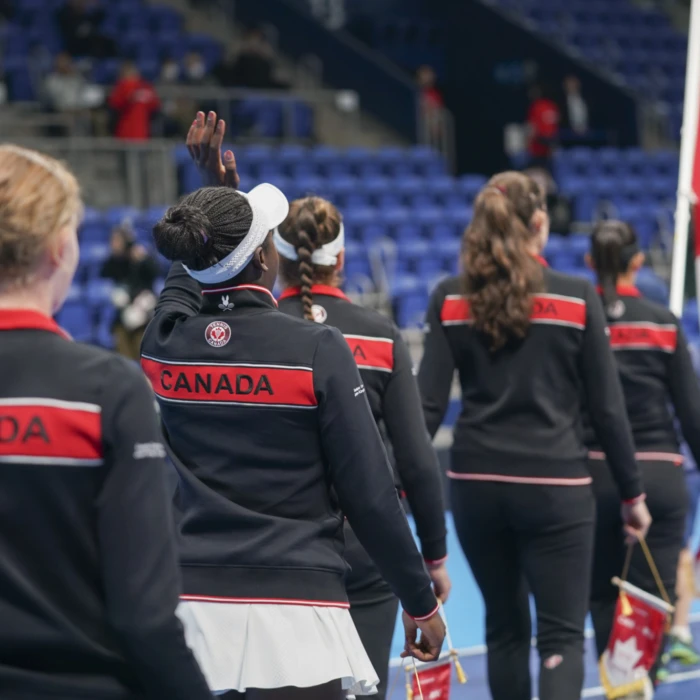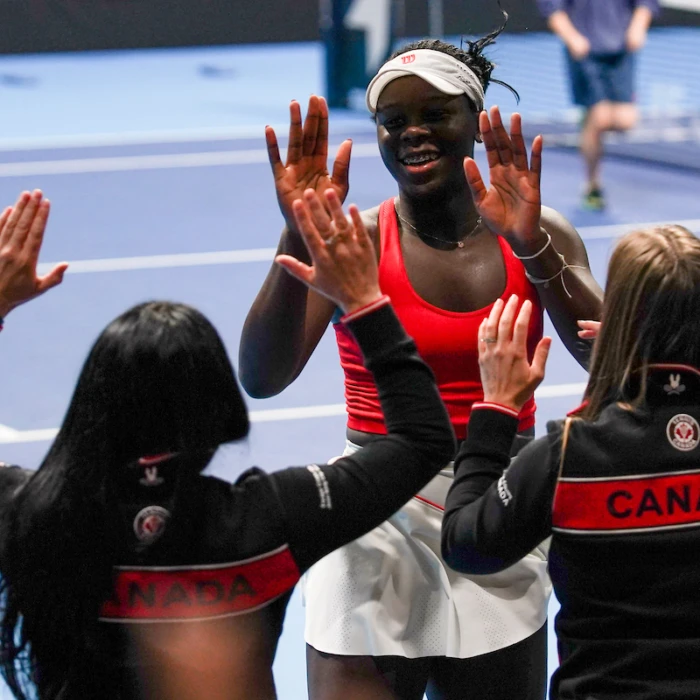
Auger-Aliassime back to winning ways at Wimbledon; Diallo cruises to second round
It was a Montreal double in the Wimbledon first round as Félix Auger-Aliassime and Gabriel Diallo won their...
Stay up-to-date on all things Canadian tennis courtesy of exclusive interviews, analysis, and event coverage. Search by subject and explore the latest news in multiple formats including articles, videos, and podcasts.

It was a Montreal double in the Wimbledon first round as Félix Auger-Aliassime and Gabriel Diallo won their...

Leylah Annie Fernandez is through to the second round of Wimbledon, while Carson Branstine’s main draw debut ends in...

Five Canadians are competing in the singles draws at Wimbledon, which gets underway on Monday. All could face a Top 6...

Auger-Aliassime fell short of the Mallorca final after a straight-set loss to Tallon Griekspoor on Friday.

Félix Auger-Aliassime took down Hamad Medjedovic in the Mallorca, but Gabriel Diallo was beaten in his quarter-final...

Davis Cup champion to inspire next generation through national grassroots program and help Tennis Canada achieve goal...

Seven Canadians are competing in Wimbledon qualifying this week while another trio are entered in warm-up events on the...

Leylah Annie Fernandez was defeated in the quarter-finals of the Nottingham Open on Friday by Dayana Yastremska in...

Team Canada has been drawn in Group A alongside Denmark and host nation Mexico in the 2025 Billie Jean King Cup by...

Tennis Month in Canada is in full swing with more than 100 beginner-friendly events run through the Rogers First Set...

Shawn Courchesne won the first two ITF wheelchair singles titles of his career at back-to-back events in Setubal,...